Once considered little more than geological curiosities, rare earth elements (REEs) are beginning to generate media buzz as their role in green applications such as hybrid cars and wind turbines becomes apparent.
China provides about 90% of the world’s REEs but has indicated lately that it would like to keep that supply to itself in future. So the race is on to find alternative sources that can begin producing a few years down the road, when demand is expected to exceed supply by several thousand tonnes annually.

Courtesy of Clint Cox, The Anchor House Inc.
But not all rare earth deposits are created equal and markets for their output tend to wax and wane in step with technological innovation. Some of the most sought after REEs have fairly recent applications. Neodymium, for example, is used in supermagnets for disk drives, hybrid cars and windpower generation and cerium is a key ingredient in automotive catalysts. On the other hand, the market for REEs used in CRTs is shriveling as flat-panel technology transforms the television market.
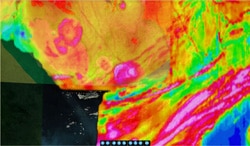
So the key is to find the kind of rare earth deposit that will be of value to the growing field of green technology and other high-tech applications. Ahead of the pack is Avalon Rare Metals, a Toronto-based company that recently raised $17.5 million in a tight-fisted market to further explore its advanced Thor Lake rare earth deposit in the Northwest Territories.
Thor Lake – discovered in the late seventies – is unique in that it is enriched in “heavy” REEs, which represent only about 1% of the physical weight but about 40% of the value of worldwide REE production. Some of the most valuable of these include dysprosium and terbium.
Unlike gold or base metal deposits whose fate depends on commodity prices, technology will drive mine development at Thor Lake, explains California-based newsletter writer John Kaiser, who is following “rare earth mania” closely and investing in juniors with promising REE deposits.
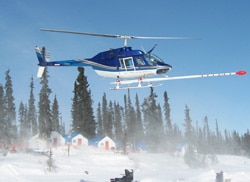
Avalon is currently outlining a modest 5-10 million tonne high-grade reserve while the market for rare earths remains limited, but the larger resource at Thor Lake represents and an opportunity to develop new technologies that rely on security of supply.
For explorers interested in finding the next Thor Lake, there are several exploration techniques available, from satellite imagery to geochemistry.
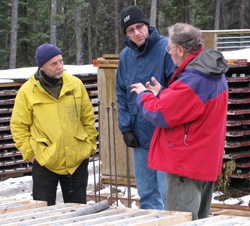
Economic concentrations of these REE-bearing minerals are generally hosted in, or associated with, alkaline igneous rocks and carbonatites, so the first step would be to identify environments where these complexes occur. They are generally circular and can be identified by imagery, even in deeply weathered or highly vegetated terrains. They also tend to cluster along linear belts such as the Kapuskasing structural zone in Ontario.
Airborne magnetic, radiometric, and gravity surveys can also be used to delineate host rocks. Because many carbonatite complexes are surrounded by mafic alkaline rocks, they often show up as a magnetic bull’s eye combined with a gravity low and ringed by a gravity high.
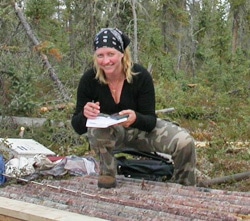
“In general, the host rocks to rare earth deposits are good geophysical responders,” says David Trueman, one of the main geological consultants on the Thor Lake project and an expert on REE exploration. “On the ground, geophysics is a secondary tool that might help look for responsive minerals affiliated with the deposit itself.”
Radiometrics, for example, can be an extremely useful technique if the REE deposit is associated with thorium or uranium, as they tend to be. Both Thor Lake and the Mountain Pass carbonatite in California, which has been mined for REEs since 1954, were first discovered during prospecting for uranium.
However, while associated radioactivity can help guide exploration for REE deposits, too much can make a deposit uneconomic. Because the cost to process and sequester radioactive waste is becoming prohibitive, companies worldwide have shifted away from using radioactive REE concentrates, effectively ruling out ores that contain thorium such as monazite, a common REE-bearing placer mineral. The most desirable deposits contain REE-bearing minerals that are relatively easy to break down and concentrate, such as fluoro-carbonates.
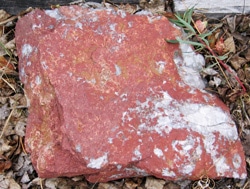
Geochemical prospecting is an effective tool because most REE minerals are heavy and resistant. Trueman would start with regional stream sediment or lake bottom sediment geochemical surveys to identify common rare earths such as cerium and yttrium and associated rare metals such as niobium and zirconium. If the regional surveys proved successful, he would move into higher density soil and lithogeochemical sampling, coupled with ground radiometric and magnetic surveys to pinpoint drill targets.
Trueman notes that geology, in particular mineralogy, can also provide guidance. Greisening in highly altered syenitic rocks or derived pegmatites can indicate the presence of rare earths because the process occurs during the last stages of crystallization when REEs come out of solution. Minerals typically associated with this phase are quartz, albite, lithian mica polytypes, and fluorite.
But with all these tools on hand, where in the world would Trueman start his search? Probably, he says, in an exhumed rifting environment that is underexplored for REEs – the carbonatite and alkaline complexes of Brazil and Nigeria, for example.
References
Castor, B. and James B. Hedrick. Rare Earth Elements, 2006. Pages 769-792 in Industrial Minerals and Rocks. Edited by Jessica Elzea Kogel, Nikhil C. Trivedi and James M. Barker. Society for Mining, Metallurgy and Exploration. http://www.rareelementresources.com/i/pdf/RareEarths-CastorHedrickIMAR7.pdf
Haxel, Gordon B., Hedrick, James B. and Greta J. Orris, 2002. Rare Earth Elements – Critical Resources for High Technology. USGS fact sheet.